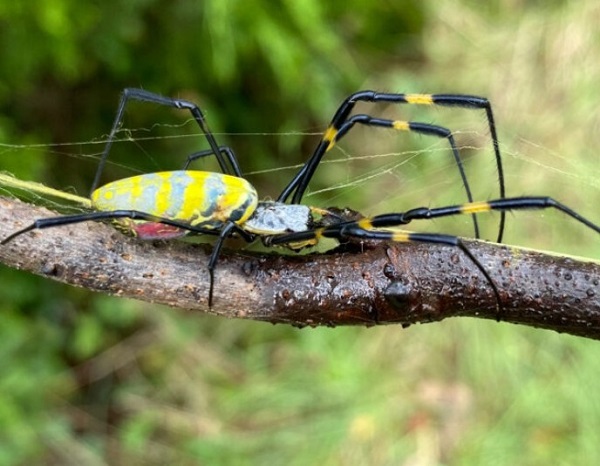NOTTINGHAM, MD—An invasive species of spider that has spread throughout the Southeast in recent years may soon take aim at the entire East Coast, according to a new study.
The Joro spider first appeared in Georgia around 2013 and new research from the University of Georgia suggests the invasive arachnids could spread through most of the Eastern Seaboard.
Joros don’t appear to have much of an effect on local food webs or ecosystems, said Andy Davis, corresponding author of the study and a research scientist in the Odum School of Ecology. They may even serve as an additional food source for native predators like birds.
“People should try to learn to live with them,” he said. “If they’re literally in your way, I can see taking a web down and moving them to the side, but they’re just going to be back next year.”
“The way I see it, there’s no point in excess cruelty where it’s not needed,” added Benjamin Frick, co-author of the study and an undergraduate researcher in the School of Ecology. “You have people with saltwater guns shooting them out of the trees and things like that, and that’s really just unnecessary.”
The Joro spider’s legs span three inches, about the diameter of a soup can.
In addition to the spiders’ startling size – female members of the species are as big or bigger than the Carolina wolf spider, the largest native spider in the US – they’re also eye-catching for their yellow and blue coloration, according to Yahoo News.
Native to Korea, China, Taiwan, and Japan, researchers believe the spiders probably hitched a ride to Georgia on a cargo ship.
Luckily, the spiders are pretty much harmless to humans and most pets. Scientists say the creature’s bite feels like a tiny pinch, and that while they are venomous, it would pose no threat to a human who gets bitten.
The spider uses its web as a balloon or a parachute to sail on the wind. Using this method the spiders can actually travel between 50 to 100 miles, according to Yahoo.
The Joro spider has about double the metabolism of its relative, has a 77 percent higher heart rate, and can survive a brief freeze that kills off many of its cousins. These findings mean the Joro spider’s body functions better than its relative in a cold environment – and that means the Joros can likely exist beyond the borders of the Southeast.
More information on the Joro spider can be found in the video below.
Photo via University of Georgia


